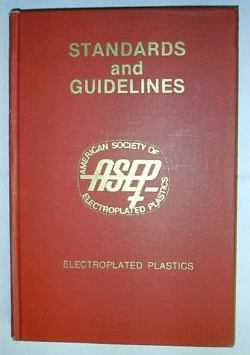
Curated with aloha by
Ted Mooney, P.E. RET

The authoritative public forum
for Metal Finishing 1989-2025

-----
Recovery or separation of palladium and tin
Q. Hello,
I am working as a electroplater in a small plating shop in Triberg, Germany. We're specialized in plating on plastic and we've the following problem:
We use an activator for the plastic which contains palladium and tin. Due to drag out we want to recover the palladium in our first rinsing tank. Can anyone please give me an idea how I can separate the palladium from the tin?
We already tried a couple of processes like nanofiltration but none of them were successful (clogging of membranes). Any help would be really appreciated?.
Thanks a lot in advance,
Sincerely,
- Triberg, Black Forest, Germany
2003
by American Society for Electroplated Plastics

on AbeBooks
or eBay or
Amazon
(affil links)
A. Most of the methods used for this are proprietary.
With the activators used for ABS plastics, most of the palladium enters the rinse as a colloidal metal cluster, not as a soluble ion, and this is in the presence of 100 times as much tin that is both soluble and insoluble. Due to this, it is not usually economical to recover the palladium from small or medium sized operations using this process.
In plating on polyamide (Nylon) plastics, an activator using soluble palladium ions is used, and recovery with ion exchange is simple, and very cost effective.
Lyle Kirmanconsultant - Cleveland Heights, Ohio
2003
A. One trick I've found, is to simply add hypochlorite (I used calcium hypochlorite), which causes the Palladium to precipitate as a red salt (not sure if PdCl2 or something else). Add just enough for the liquid to lose the black colour, and will end up a light orange colour, that will have ~100 ppm residual Pd.
Not 100% recovery of the Pd, but a relatively simple process that has a pretty good Pd/Sn separation.
Waste Management - Melbourne, Victoria, AUSTRALIA
October 22, 2018
Q. I am working with a British University on a new technology to recover Pd from spent Pd/Sn activator baths/rinse water (as well as other applications). Does anyone have a small sample (say few hundred ml) of real-life spent activator/rinse water that we can test our technology on? It works well on artificial Pd/Sn mixes.
We would show you the test results and could discuss applying on pilot scale as a quid pro quo.
Emerging technology business - London, UK
August 22, 2019
Ed. note: This RFQ is outdated, but technical replies are welcome, and readers are encouraged to post their own RFQs. But no public commercial suggestions please ( huh? why?).
Q, A, or Comment on THIS thread -or- Start a NEW Thread